This post may contain affiliate links. Please read our disclosure policy.
A sizzling and mouthwatering T-bone steak recipe that is cooked perfectly in a pan! This recipe celebrates the joy of good food, combining prime cuts of beef with delightful flavors of garlic and herbs. It is the best t-bone steak recipe!
Serve with Crispy Brussels Sprouts and Mashed Potatoes.
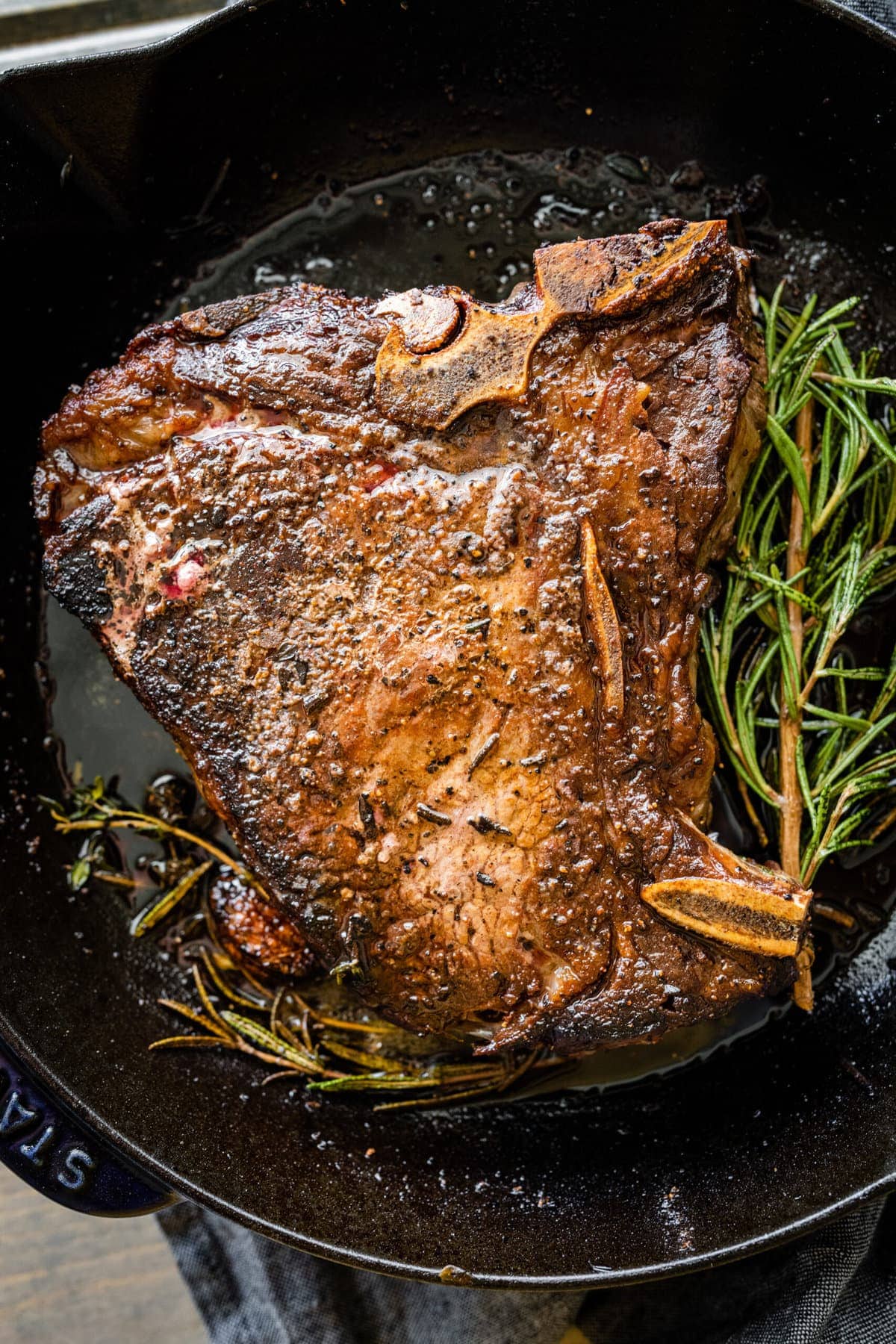
Best Pan-Seared T-Bone Steak Recipe
Indulge in a succulent and flavorful T-bone steak seared to perfection with a tantalizing crust. The juicy, tender meat melts in your mouth as you savor each bite! With a touch of garlic and butter cascading over the steak, it delivers an irresistible combination of richness and tenderness. It is the best way to enjoy pan-seared t-bone steak.
See this complete how-to-cook steak guide for more information on thickness and cooking times. You will also love Perfect Prime Rib Recipe and Perfect Pot Roast Recipe.
Table of Contents
Simple Ingredients
These ingredients work together to create a delectable T-bone steak seasoned to perfection and offer a delightful balance of flavors. Make sure to get a good steak for the best results!
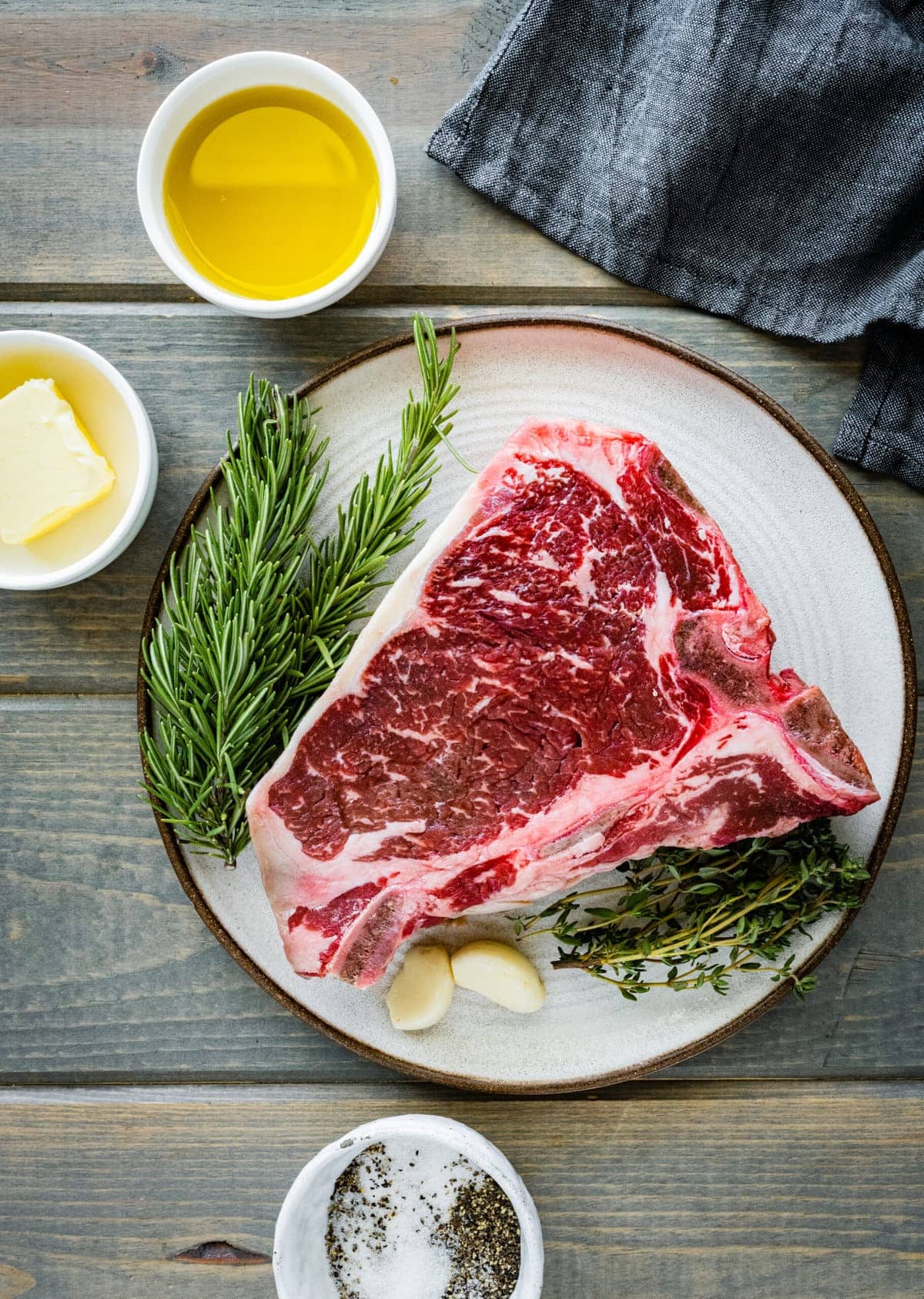
- T-bone steak(s): A prime cut of beef that includes both the tenderloin and the strip steak, providing a combination of tenderness and rich flavor.
- Salt and freshly ground black pepper: Essential seasonings that enhance the steak’s natural flavors.
- Olive oil: Used to drizzle in the pan. It helps prevent sticking and adds a touch of richness.
- Butter: A pat of butter adds a luscious and velvety texture to the steak while contributing a subtle richness.
Optional ingredients that can be used to elevate the flavor profile include:
- Garlic cloves: Crushed or minced garlic cloves can be added to the pan during cooking to infuse the steak with a delicious aroma and savory taste.
- Thyme sprigs: Fresh thyme sprigs can be added to the pan while searing the steak, imparting a hint of earthy and herbal notes.
See the recipe card for quantities.
How To Cook T-Bone Steak
Enjoy the most flavorful steak for special occasions or a weeknight dinner at home. Make sure to use the best steaks you can find for the
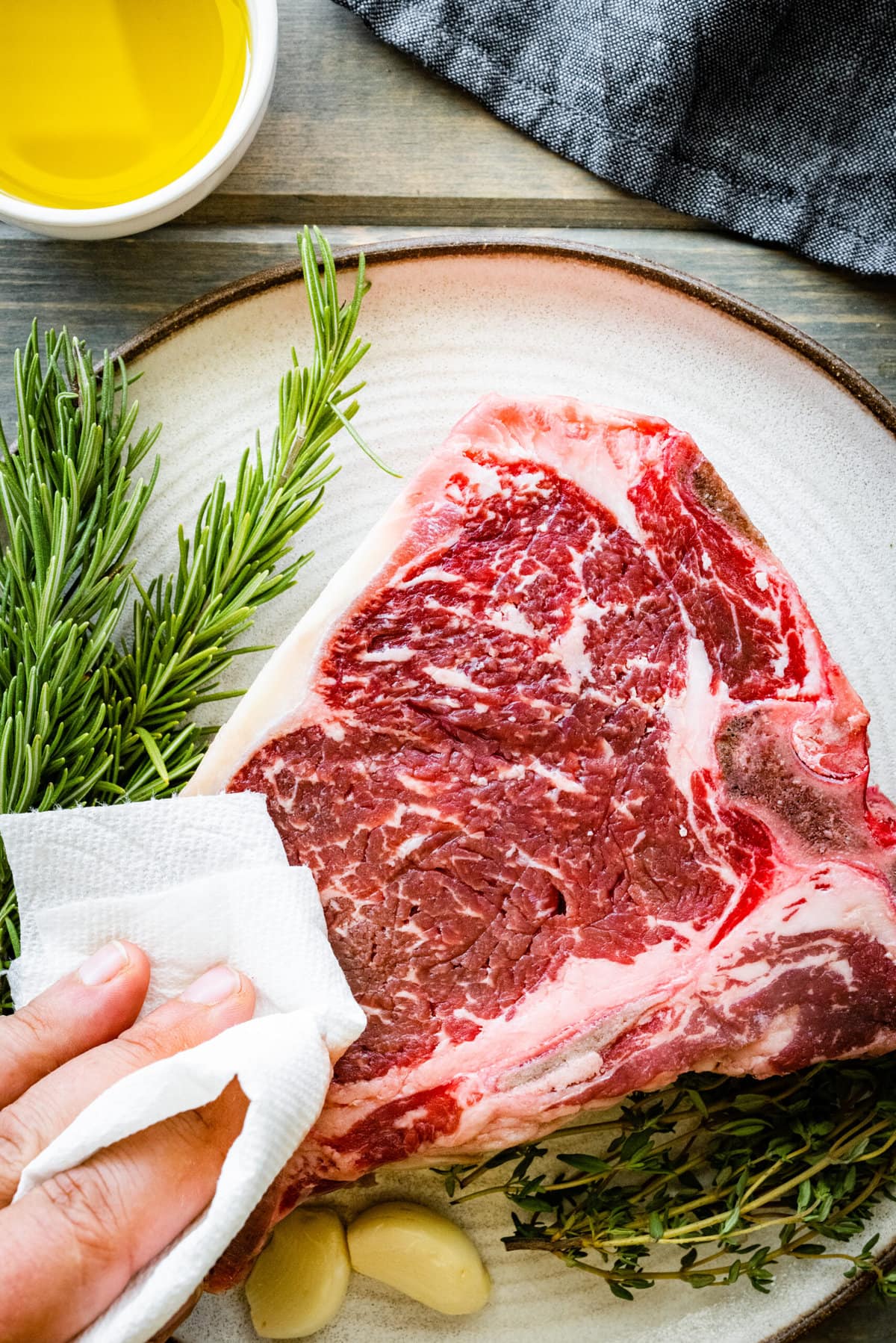
Take the T-bone steak from the refrigerator and let it come to room temperature. This allows for more even cooking.
Pat the steak dry with paper towels to remove excess moisture.
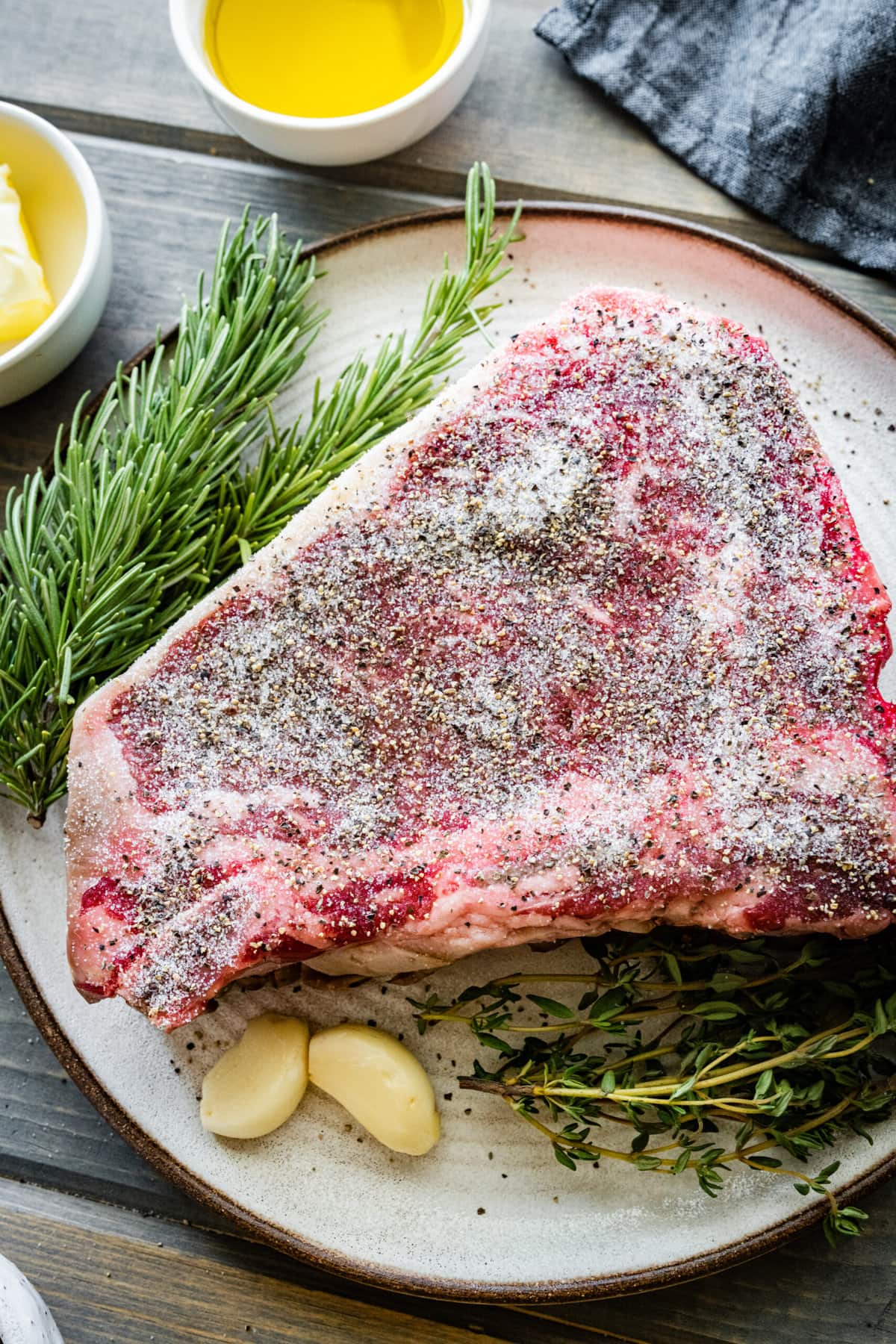
Season both sides generously with salt and freshly ground black pepper. If desired, add other seasonings, such as garlic cloves or fresh thyme sprigs and/or fresh rosemary.
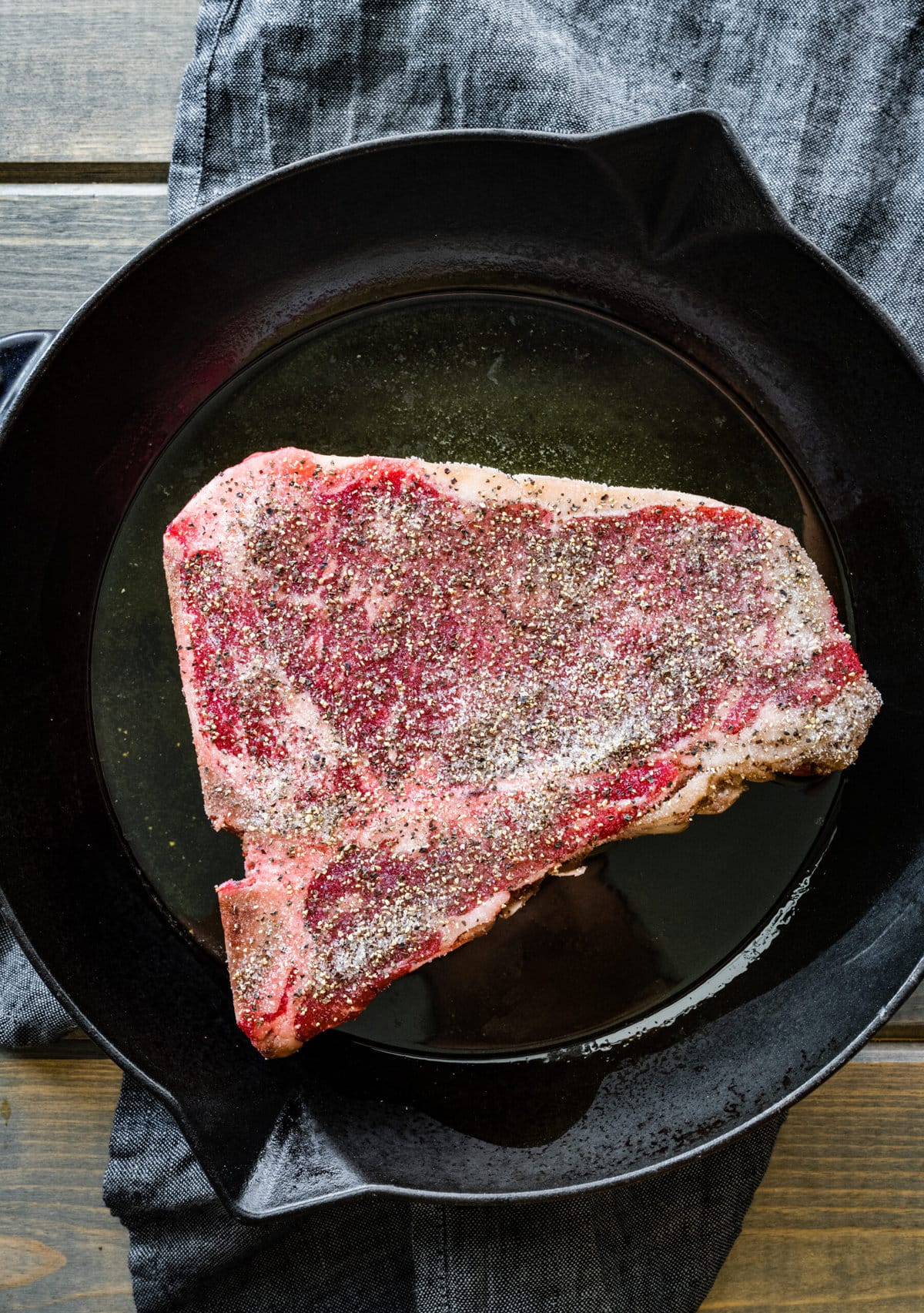
Preheat a large skillet, heavy-bottomed skillet, or cast-iron pan over medium-high heat. Add a drizzle of olive oil and a tablespoon of butter to the pan. Let the butter melt and start to sizzle.
Place the T-bone steak in the hot pan and let it sear undisturbed for about 5-7 minutes.
Flip the steak using tongs and cook on the second side for an additional 5-7 minutes for medium-rare doneness. Adjust the cooking time according to your preferred level of doneness.
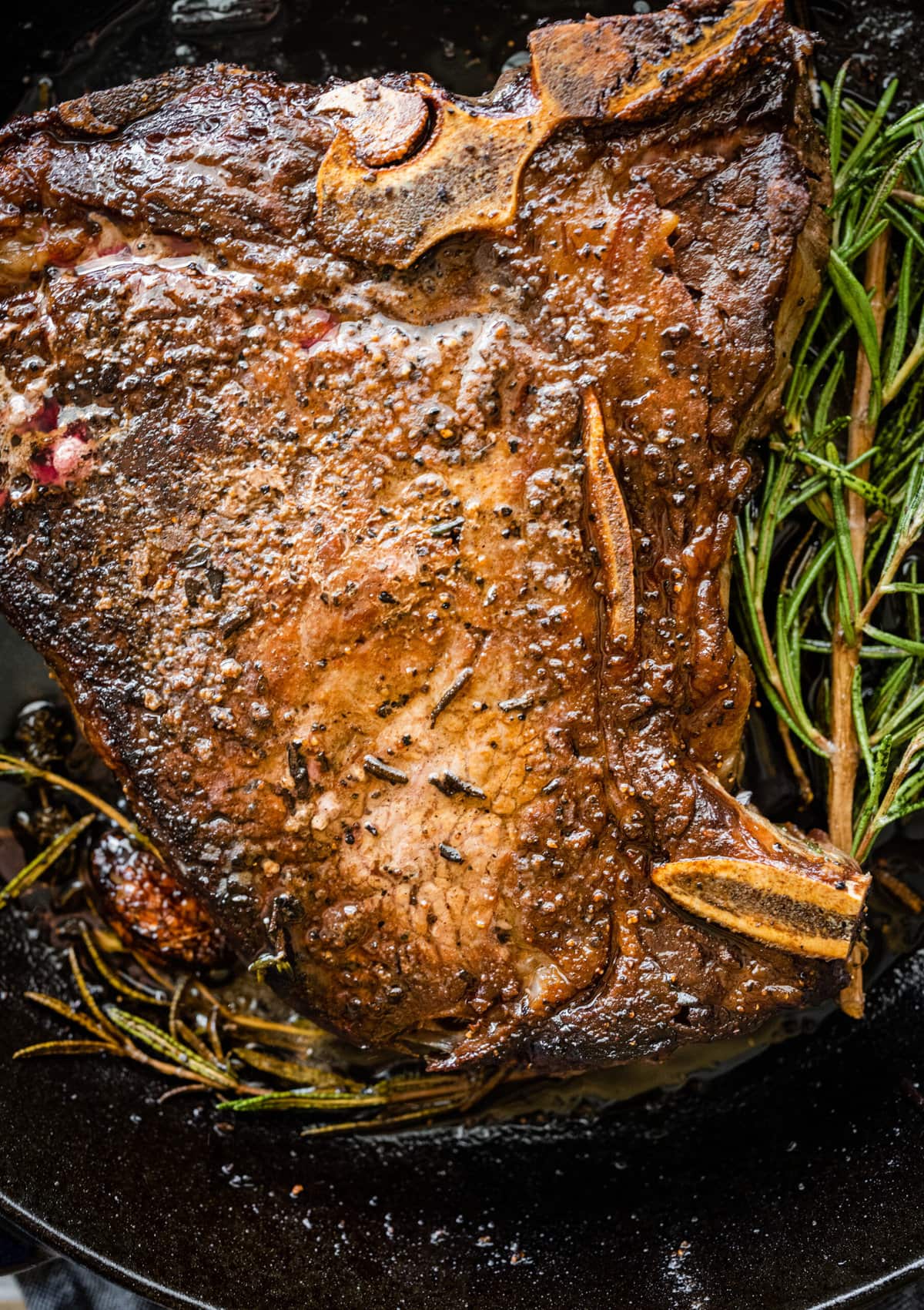
Check the internal temperature of the steak using an instant-read meat thermometer. For medium-rare, the temperature should be around 135°F (57°C), while medium is around 145°F (63°C). Remember that the temperature will rise a few degrees as the steak rests.
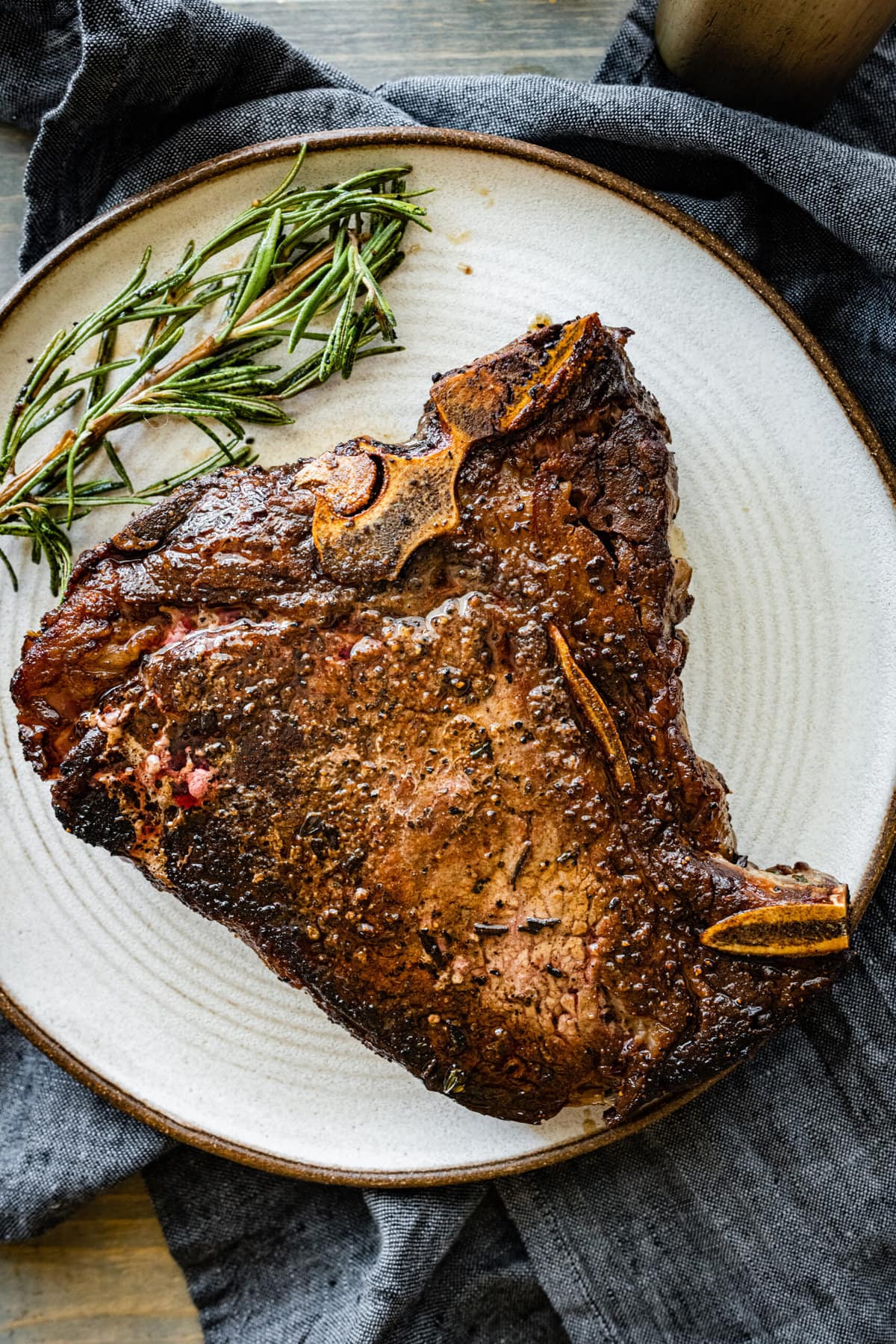
Once the steak reaches your desired level of doneness, remove it from the pan, transfer it to a cutting board, and loosely cover it with aluminum foil. Allow the steak to rest for about 10 minutes. This helps the juices redistribute and ensures a tender steak.
Slice the T-bone steak against the grain into thick slices. Serve immediately, and you can drizzle any remaining pan juices over the steak for added flavor. Serve with mashed potatoes and green beans, or your favorite side dishes.
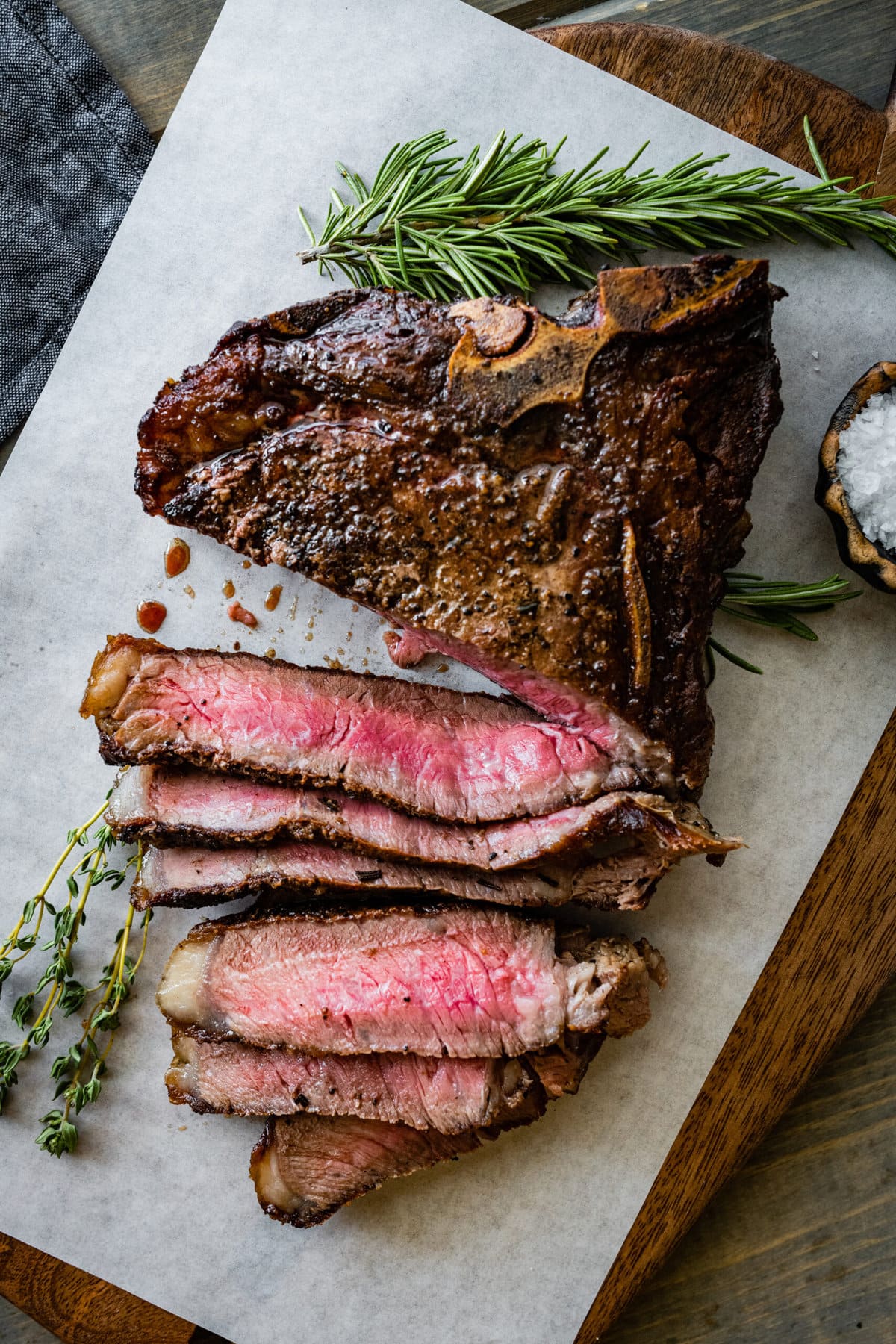
If you love Steak, you will also enjoy Steak Marsala with Mushroom Sauce and our Easy Stove Top Trip-Tip Steak!
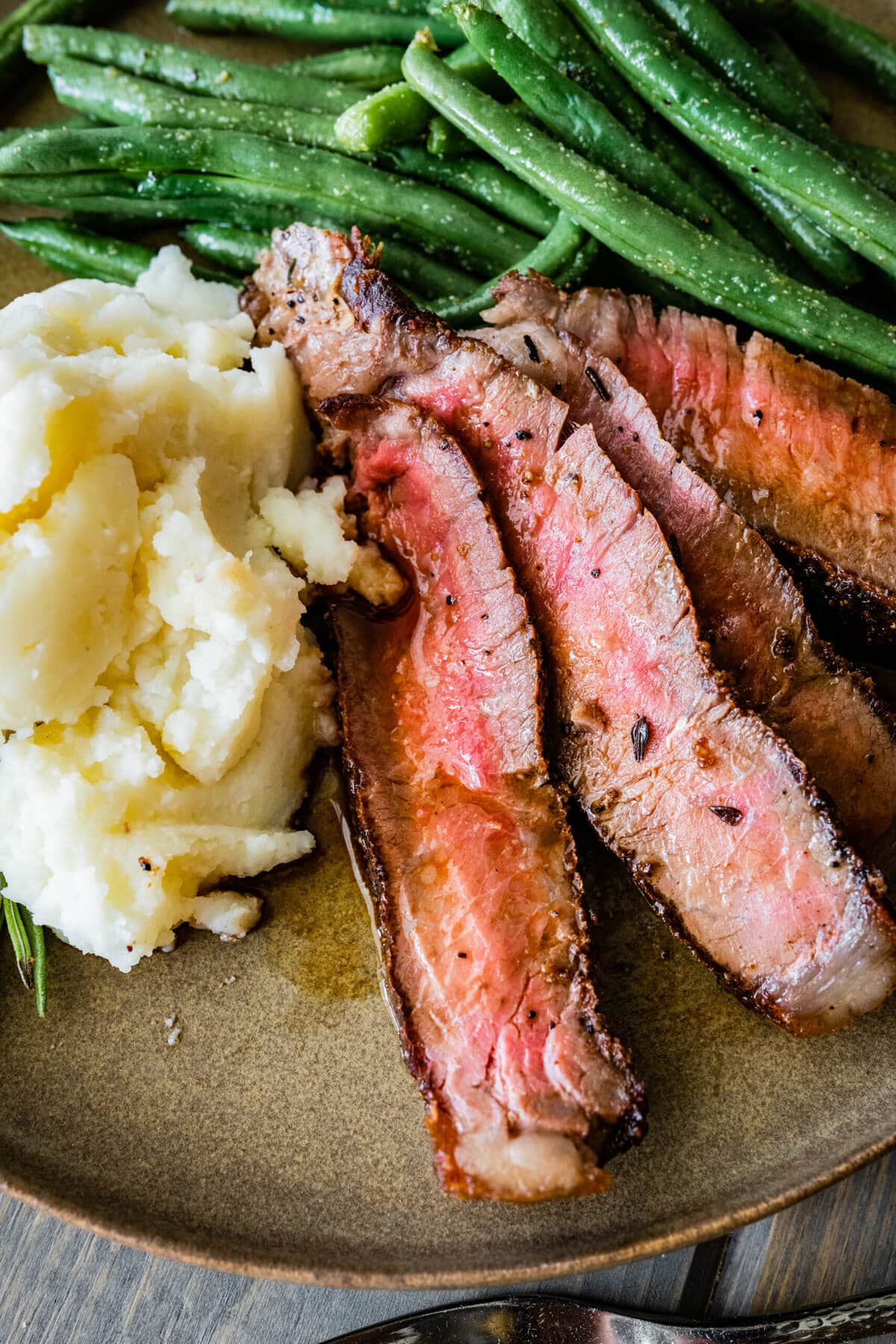
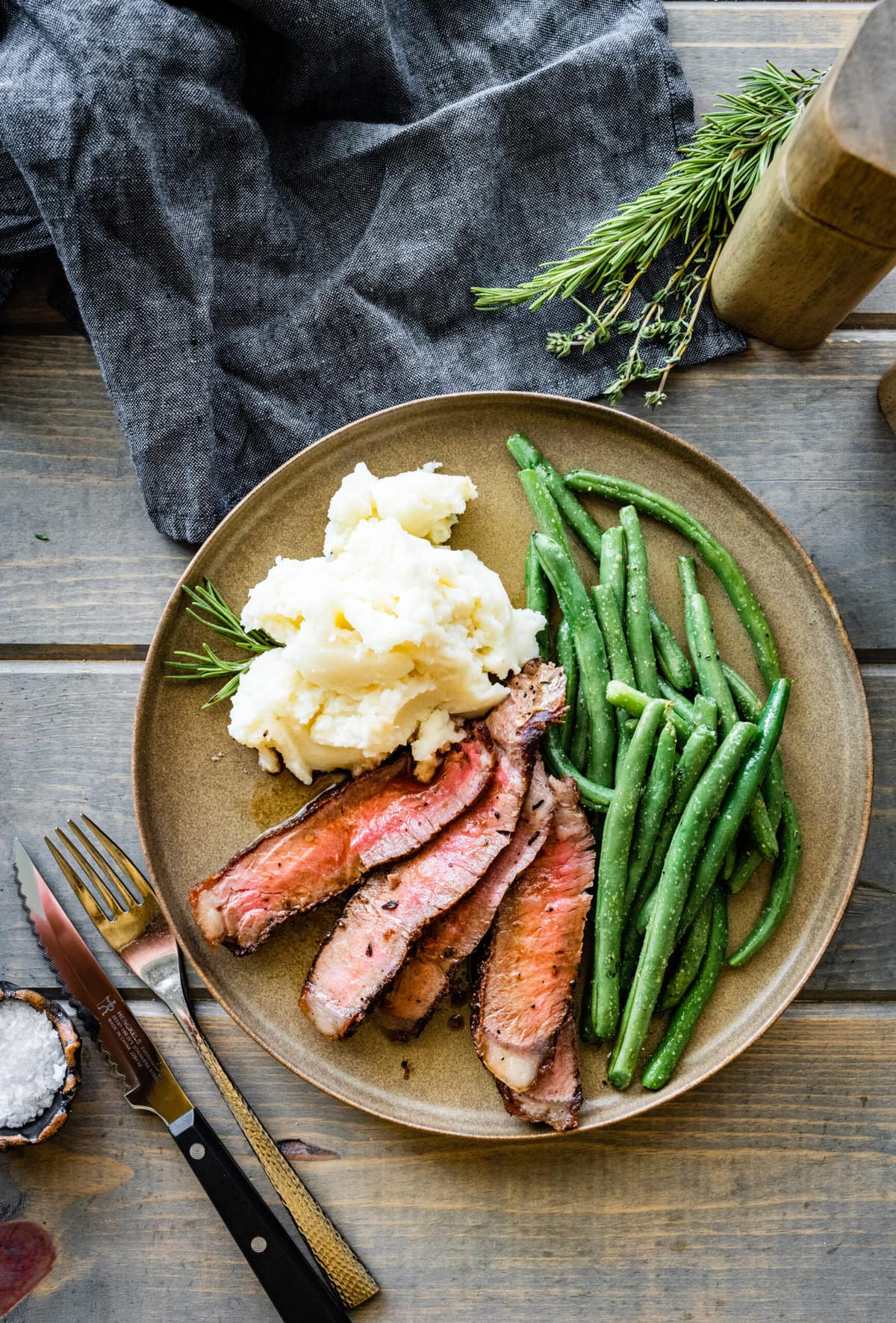
You can also use the leftovers to make a steak version of this Prime Rib Sandwich!
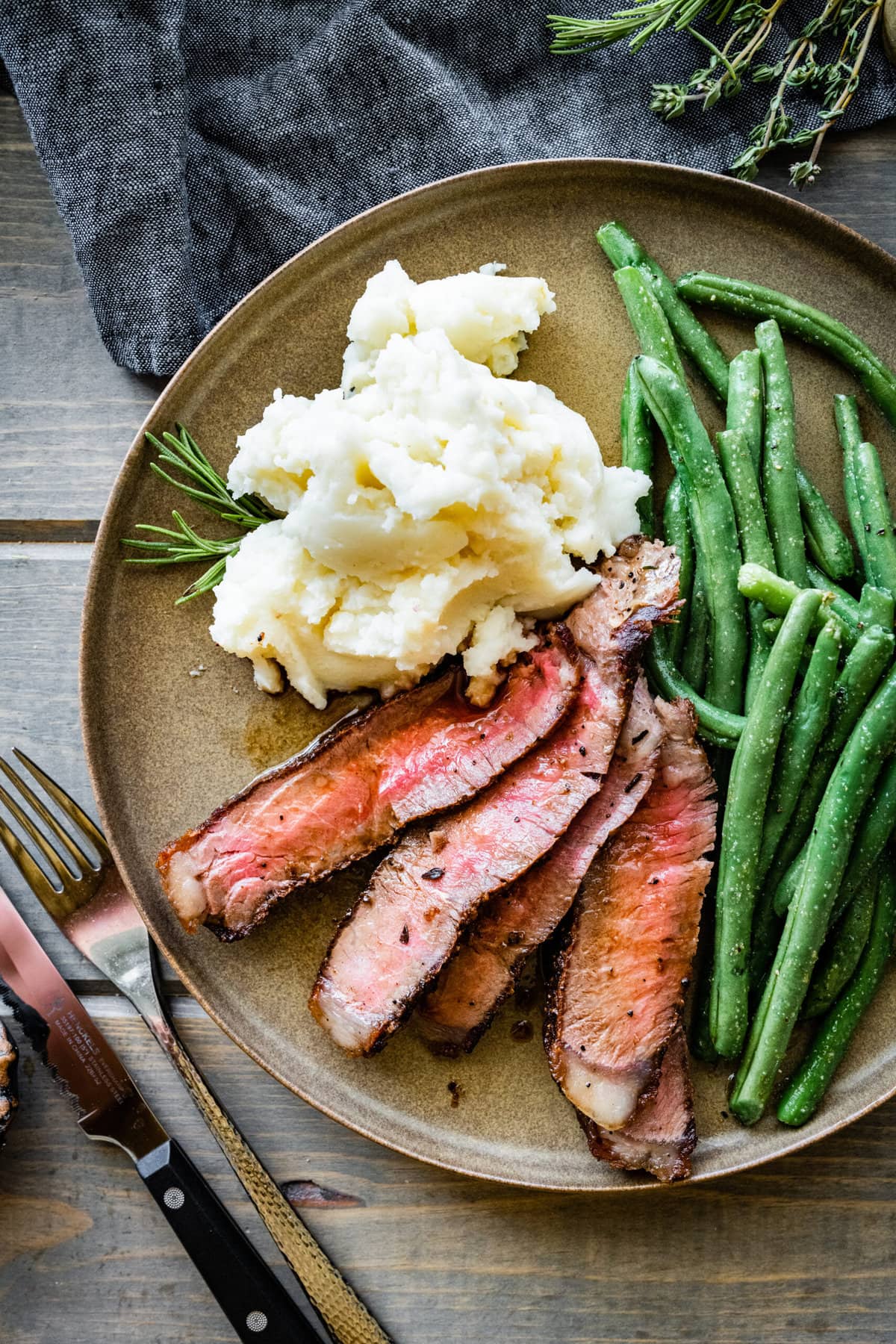
Top Tips
Here are some helpful tips to help you achieve the best results when cooking a T-bone steak in a pan:
- Choose a quality steak: Look for a T-bone steak with good marbling, which will contribute to tenderness and flavor. Select steaks that are at least 1-inch thick for better cooking control.
- Let the steak come to room temperature: Allowing the steak to rest at room temperature for about 30 minutes before cooking will ensure more even cooking throughout the meat.
- Properly season the steak: Season the T-bone steak generously with salt and freshly ground black pepper on both sides. You can add other seasonings like garlic, herbs, or spices according to your taste preferences.
- Preheat the pan properly: It’s essential to preheat the pan over medium-high heat to ensure a good sear. A hot pan will create a delicious crust on the steak. Using a heavy-bottomed skillet or cast-iron pan is recommended for even heat distribution.
- Use a combination of oil and butter: Adding a drizzle of olive oil to the pan helps prevent sticking, while butter adds flavor. The combination of oil and butter gives the steak a nice sear and enhances its taste.
- Avoid overcrowding the pan: Cook one or two steaks at a time, depending on the size of your pan, to prevent overcrowding. Overcrowding the pan will lead to steaming instead of searing, resulting in a less desirable crust.
- Sear and flip only once: Allow the steak to sear undisturbed for a few minutes on each side to develop a beautiful crust. Resist the temptation to flip the steak repeatedly, as it can interfere with the searing process.
- Use a meat thermometer: To ensure the steak reaches your preferred level of doneness, use an instant-read meat thermometer to check the internal temperature. This will help you achieve the desired level of juiciness and avoid overcooking.
- Let the steak rest: After cooking, let the T-bone steak rest for about 5 minutes before slicing. This allows the juices to redistribute throughout the meat, producing a more tender and flavorful steak.
- Slice against the grain: When it’s time to slice the steak, cut against the grain. This will help ensure a more tender texture and make it easier to chew.
FAQ
A large, heavy-bottomed skillet or a cast-iron pan is ideal for cooking steak in a pan. These pans distribute heat evenly and retain heat well, allowing for a consistent and thorough sear.
For the juiciest and most flavorful T-bone steak, pat it dry with a paper towel, seasoning it generously with salt and pepper. Then, sear it in a hot cast-iron pan with a mix of butter and olive oil, herbs, and garlic then flipping only once until it reaches your preferred level of doneness. Follow this recipe!
The best way to determine the doneness of a steak is by using an instant-read meat thermometer. Here are some temperature ranges for common doneness levels: medium-rare (135°F / 57°C), medium (145°F / 63°C), medium-well (150°F / 66°C), and well-done (160°F / 71°C).
To ensure a tender steak, it’s crucial to choose the right cut of meat and cook it properly. Cuts like ribeye, New York strip, or tenderloin are naturally tender. Additionally, allowing the steak to come to room temperature before cooking, properly seasoning it, and avoiding overcooking can all contribute to a tender result.
While the recipe is specifically tailored for T-bone steak, you can also use other cuts of meat to achieve delicious results. Here are a few alternative cuts that work well when cooked in a similar pan-searing method:
Ribeye: Known for its rich marbling and tender texture, ribeye steak is a popular choice for pan-searing. Its great fat content enhances the flavor and juiciness of the meat.
New York Strip: Also called strip steak or sirloin steak, the New York Strip is a flavorful and moderately tender cut. It offers a balance of tenderness and beefy taste, making it an excellent option for pan-cooking.
Filet Mignon: If you prefer a leaner and more tender cut, filet mignon is a prime choice. This tenderloin steak is known for its buttery texture and subtle flavor, making it a luxurious option for pan-searing.
Porterhouse: Similar to T-bone steak, the porterhouse steak consists of both tenderloin and strip steak. It offers a larger tenderloin, making it a great choice if you enjoy a more tender and milder flavor.
Sirloin: Sirloin steak is a versatile option with good flavor and tenderness. It can be economical while still providing a satisfying steak experience when cooked properly.
NOTE: When substituting cuts, keep in mind that cooking times and techniques may vary slightly due to differences in thickness and fat content. Adjust cooking times accordingly and use a meat thermometer to ensure the desired level of doneness.
Marinades: Before cooking, marinate the T-bone steak to infuse it with additional flavors. You can use a simple marinade of olive oil, garlic, herbs (such as rosemary or thyme), and a balsamic vinegar or soy sauce splash. Let the steak marinate in the refrigerator for at least 30 minutes or overnight for a more intense flavor.
Dry Rubs: Instead of a marinade, use a dry rub to season the steak. Create a blend of spices and herbs, such as paprika, cumin, chili powder, garlic powder, onion powder, and black pepper. Rub the mixture onto the steak and let it sit for about 30 minutes to allow the flavors to penetrate.
Compound Butter: Enhance the flavor of your cooked T-bone steak by topping it with compound butter. Mix softened butter with herbs, garlic, or other seasonings. Allow the butter to chill, then place a slice on top of the hot steak, allowing it to melt and add a rich, flavorful element.
Pan Sauce: After cooking the T-bone steak in the pan, deglaze the pan with a splash of red wine, beef broth, or balsamic vinegar. Scrape up the browned bits from the bottom of the pan and let the liquid reduce slightly. Add a knob of butter and season with salt, pepper, and herbs to create a flavorful pan sauce to drizzle over the steak.
T-Bone Steak Salad: Slice the cooked T-bone steak and serve it atop a bed of mixed greens, cherry tomatoes, cucumbers, and your choice of salad vegetables. Drizzle with a tangy vinaigrette or creamy dressing for a refreshing and satisfying meal.
Asian-Inspired T-Bone: For an Asian twist, marinate the steak in a mixture of soy sauce, ginger, garlic, and a touch of honey. Cook the steak as usual, and serve it sliced with stir-fried vegetables for a delicious Asian-inspired meal.
Good Meat Thermometer
Cast iron Skillet (preferred)
Large heavy-duty stainless steel pan (if using a smaller pan, cook steaks one at a time)
Storing:
-Let the leftover steak cool: Allow the cooked T-bone steak to cool down at room temperature for about 30 minutes before storing. This helps prevent moisture buildup and maintains the texture.
-Wrap it properly: Wrap the steak tightly in plastic wrap or aluminum foil to protect it from air exposure and prevent freezer burn. Alternatively, you can use airtight containers or resealable plastic bags.
-Refrigeration: Place the wrapped steak in the refrigerator and store it for up to 3-4 days. Make sure to label the package with the date to keep track of its freshness.
-Freezing (optional): If you want to store the T-bone steak for a longer period, you can freeze it. Place the wrapped steak in a freezer-safe bag or airtight container. It can be stored in the freezer for up to 2-3 months. Again, don’t forget to label the package with the date.
Reheating:
-Thaw (if frozen): If you have frozen the steak, thaw it in the refrigerator overnight or use the defrost function on your microwave. Ensure the steak is completely thawed before reheating.
– Choose the right method: There are a few different methods you can use to reheat your T-bone steak:Oven: Preheat the oven to a low temperature (around 275°F or 135°C). Place the steak on a baking sheet and heat it for about 10-15 minutes or until it reaches your desired temperature. Keep a close eye on it to avoid overcooking.
-Stovetop: Preheat a skillet or pan over medium heat. Add a small amount of oil or butter to the pan and place the steak in it. Cook for a few minutes on each side until heated through. This method helps retain the crust but may result in slightly less juicy steak compared to other methods.
-Sous vide (if you have the equipment): If you have a sous vide machine, you can reheat the steak by placing it in a sealed bag and submerging it in the preheated water bath at around 130°F to 140°F (55°C to 60°C). Leave it in the water bath for about 30 minutes, and then sear it briefly in a hot skillet for added texture.
*Monitor the temperature: To avoid overcooking, use a meat thermometer to check the internal temperature. Reheat the steak until it reaches your desired level of warmth, typically around 125°F to 130°F (52°C to 55°C) for medium-rare.
-Rest and serve: Once the steak is reheated, remove it from the heat source and let it rest for a few minutes. This allows the juices to redistribute. Slice and serve your reheated T-bone steak, and consider adding a drizzle of sauce or melted butter to enhance the flavor.
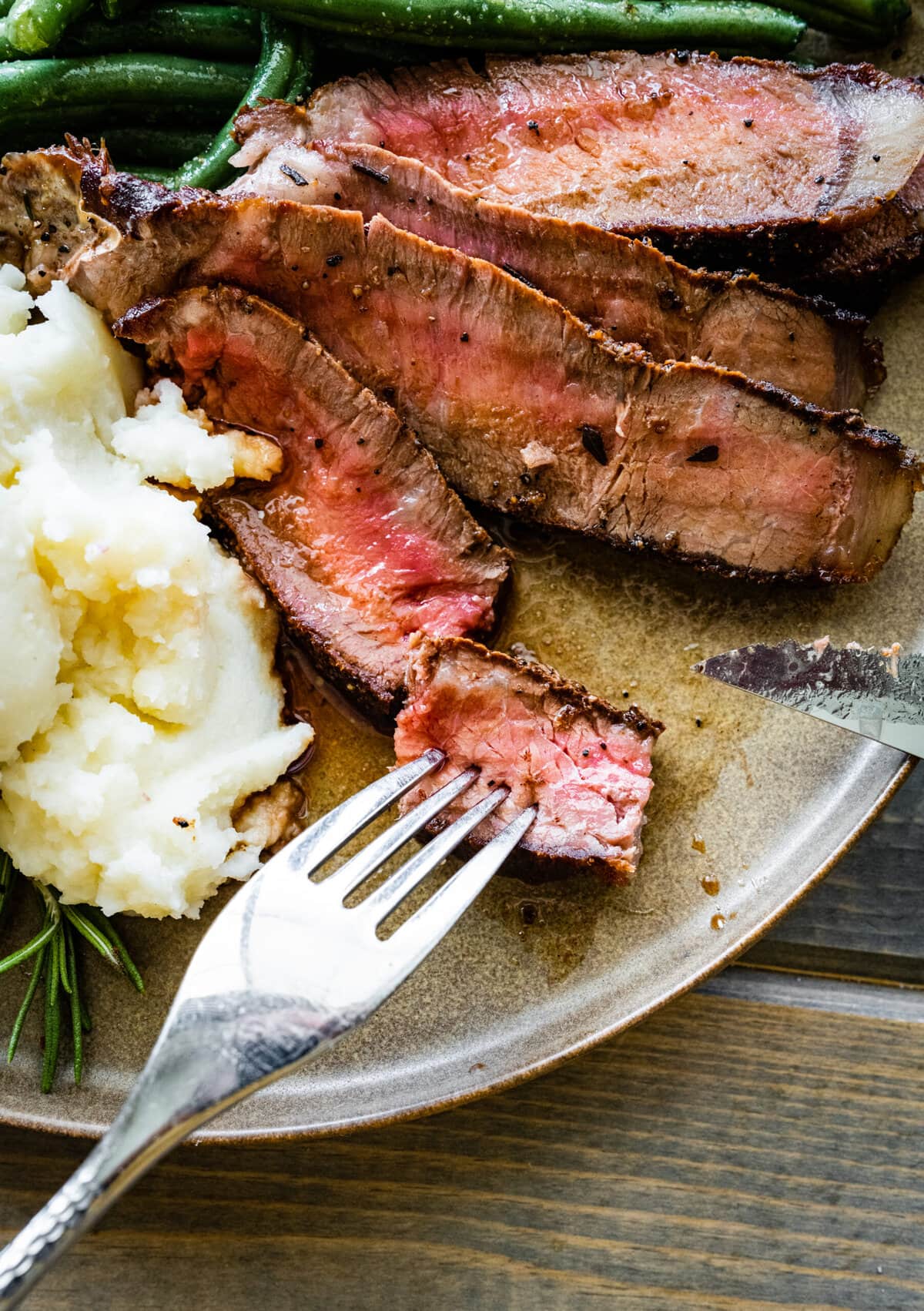
More Recipes
What to Serve with T-Bone Steak
Here are some ideas to get you started:
- Roasted Green Beans Recipe with Garlic and Lemon
- Best Creamy Au Gratin Potatoes
- Creamed Spinach Recipe
💙 MADE THIS RECIPE AND LOVED IT? 💙 Please leave a ⭐️STAR rating and COMMENT below- I love connecting with you! Tag me with your creations on Instagram and find me on Pinterest.
Print
T-Bone Steak Recipe
- Total Time: 20 minutes
- Yield: 1–2 servings 1x
Description
How to Cook T-Bone Steak in Pan (Best Recipe)- a sizzling and mouthwatering T-bone steak cooked perfectly in a pan! This recipe celebrates the joy of good food, combining prime cuts of beef with delightful flavors that will leave you grinning from ear to ear and your taste buds doing a happy dance. The best t-bone steak recipe!
Ingredients
- 1 T-bone steak at least 1 inch thick up to 2 inches (about 1 lb to 1 lb 1/2)
- Kosher salt and freshly ground black pepper
- 1 tablespoon olive oil
- 1 tablespoon butter
- Optional: 2 cloves garlic (whole and smashed), 2 sprigs fresh rosemary, 1 sprig fresh thyme, or other seasonings for additional flavor. See the variation option in the blog post.
Instructions
- Take the T-bone steak from the refrigerator and let it come to room temperature. This allows for more even cooking.
- Pat the steak dry with paper towels to remove excess moisture. Season both sides generously with salt and freshly ground black pepper. If desired, add other seasonings, such as garlic cloves or fresh thyme sprigs and/or fresh rosemary.
- Preheat a large skillet, heavy-bottomed skillet, or cast-iron pan over medium-high heat. Add a drizzle of olive oil and a tablespoon of butter to the pan. Let the butter melt and start to sizzle.
- Place the T-bone steak in the hot pan and let it sear undisturbed for about 5-7 minutes. This will give the steak a nice crust. If you prefer a more well-done steak, you can cook it a bit longer.
- Flip the steak using tongs and cook on the second side for an additional 5-7 minutes for medium-rare doneness. Adjust the cooking time according to your preferred level of doneness.
- For a more flavorful steak, you can tilt the pan slightly and use a spoon to baste the steak with the melted butter and pan juices. You can also add crushed garlic cloves and thyme sprigs to the pan during this time.
- Check the internal temperature of the steak using an instant-read meat thermometer. For medium-rare, the temperature should be around 135°F (57°C), while medium is around 145°F (63°C). Remember that the temperature will rise a few degrees as the steak rests.
- Once the steak reaches your desired level of doneness, remove it from the pan, transfer it to a cutting board, and loosely cover it with aluminum foil. Allow the steak to rest for about 10 minutes. This helps the juices redistribute and ensures a tender steak.
- Slice the T-bone steak against the grain into thick slices. Serve immediately, and you can drizzle any remaining pan juices over the steak for added flavor. Serve with mashed potatoes and green beans, or your favorite side dishes.
Notes
TOP TIPS
Choose a quality steak: Look for a T-bone steak with good marbling, contributing to tenderness and flavor. Select steaks that are at least 1 inch thick for better cooking control.
Let the steak come to room temperature: Allowing the steak to rest at room temperature for about 30 minutes before cooking will ensure more even cooking throughout the meat.
Properly season the steak: Season the T-bone steak generously with salt and freshly ground black pepper on both sides. You can add other seasonings like garlic, herbs, or spices according to your taste preferences.
Preheat the pan properly: It’s essential to preheat the pan over medium-high heat to ensure a good sear. A hot pan will create a delicious crust on the steak. Using a heavy-bottomed skillet or cast-iron pan is recommended for even heat distribution.
Use a combination of oil and butter: Adding a drizzle of olive oil to the pan helps prevent sticking, while butter adds flavor. The combination of oil and butter gives the steak a nice sear and enhances its taste.
Avoid overcrowding the pan: Cook one or two steaks at a time, depending on the size of your pan, to prevent overcrowding. Overcrowding the pan will lead to steaming instead of searing, resulting in a less desirable crust.
Sear and flip only once: Allow the steak to sear undisturbed for a few minutes on each side to develop a beautiful crust. Resist the temptation to flip the steak repeatedly, as it can interfere with the searing process.
Use a meat thermometer: To ensure the steak reaches your preferred level of doneness, use an instant-read meat thermometer to check the internal temperature. This will help you achieve the desired level of juiciness and avoid overcooking.
Let the steak rest: After cooking, let the T-bone steak rest for about 5 minutes before slicing. This allows the juices to redistribute throughout the meat, resulting in a more tender and flavorful steak.
Slice against the grain: When it’s time to slice the steak, make sure to cut against the grain. This will help ensure a more tender texture and make it easier to chew.
- Prep Time: 10 min
- Cook Time: 10 minutes
- Category: Savory
- Method: Italian
- Cuisine: Italian
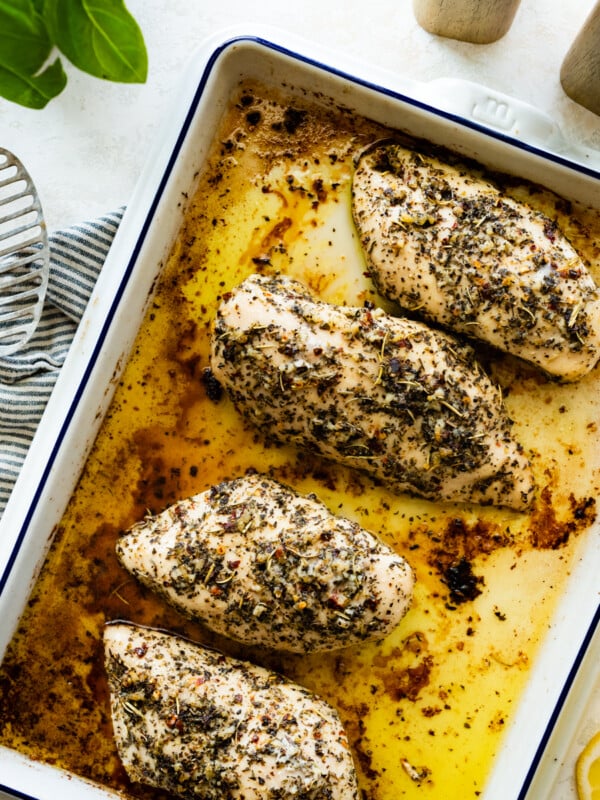


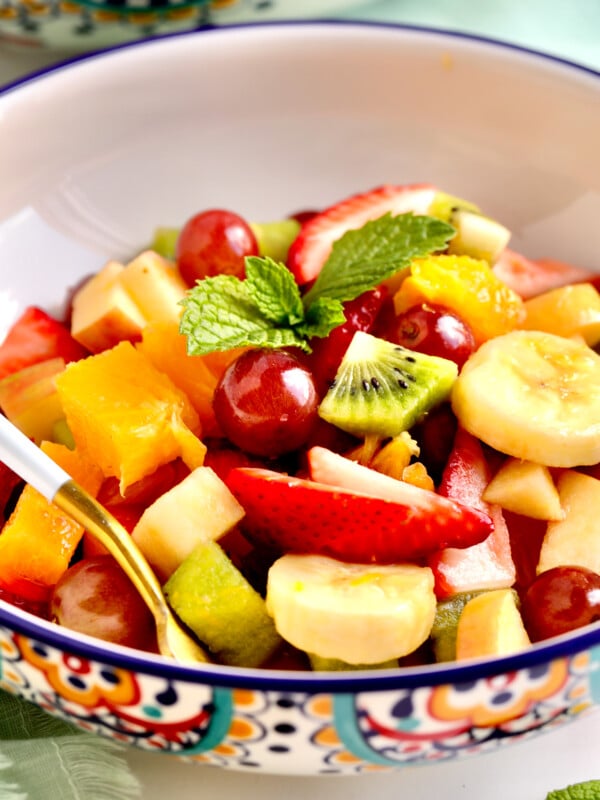
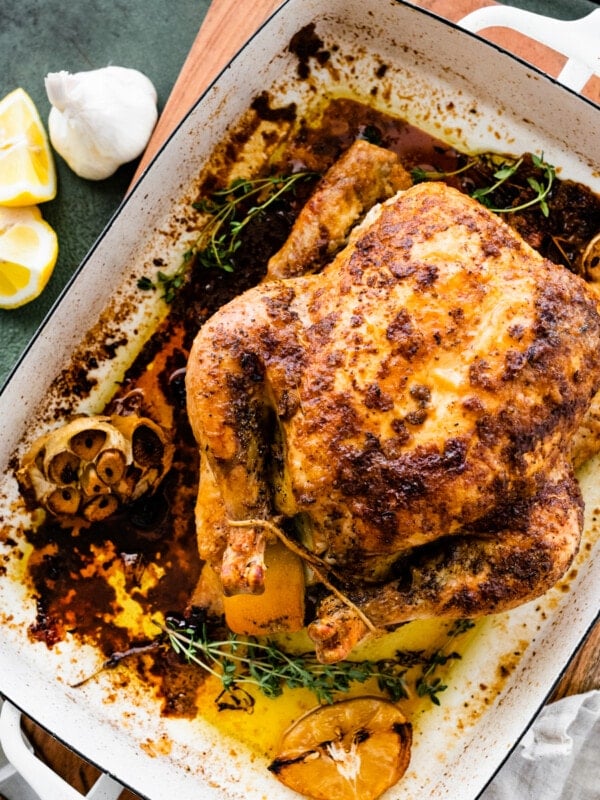
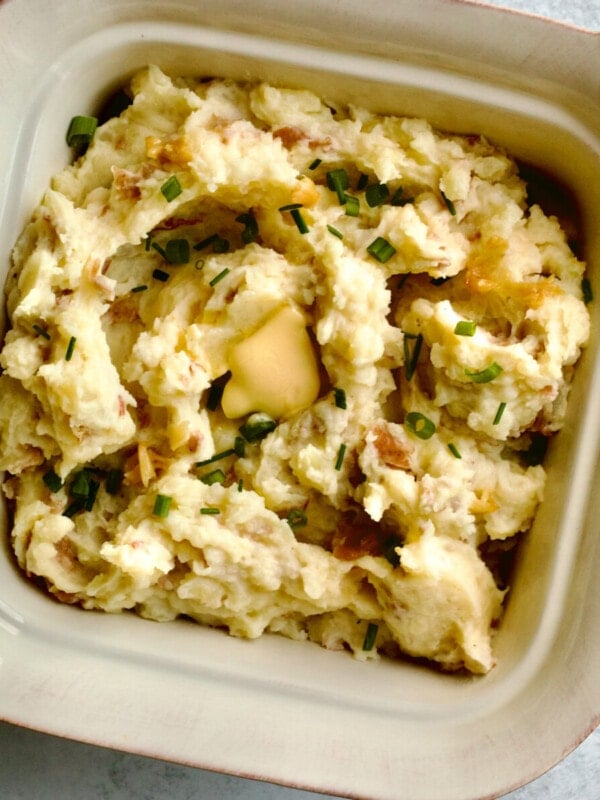
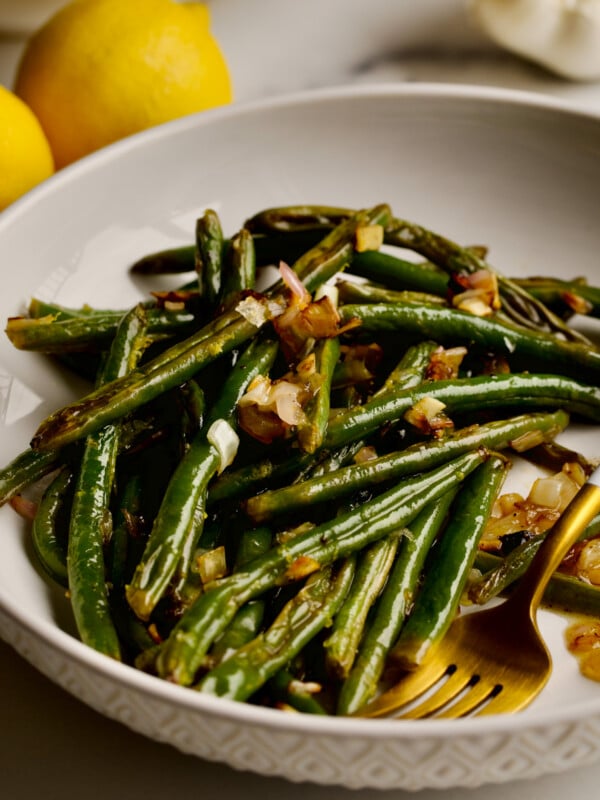

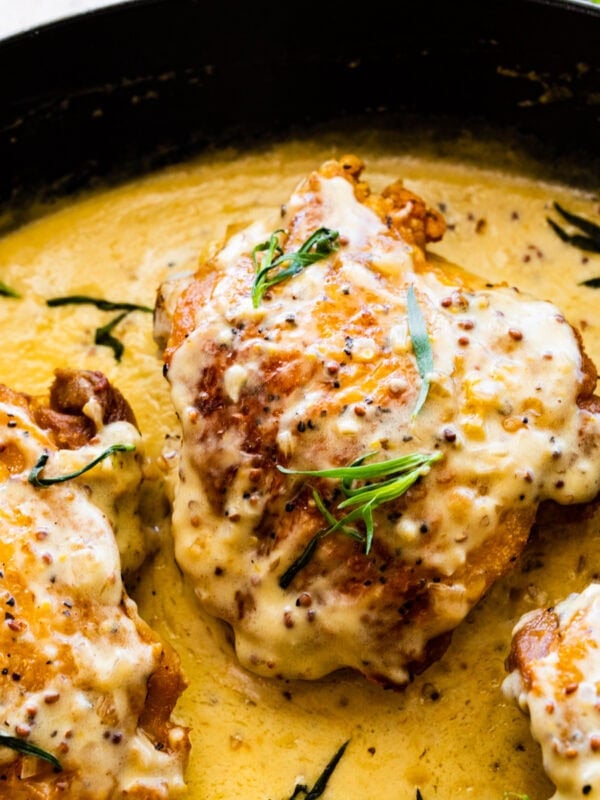

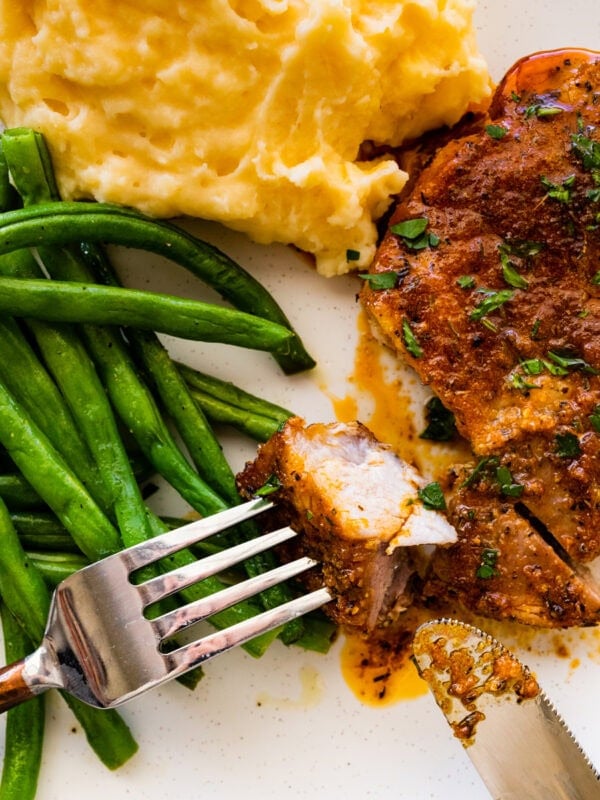





So flavor and easy to make!